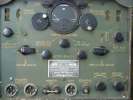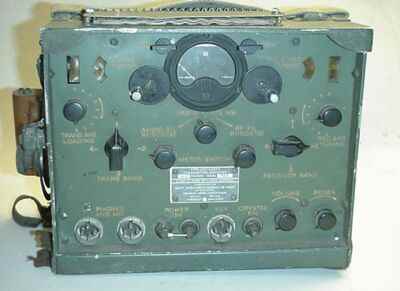|
All American Backpack- Radios from their beginning (1938) till 1990 are in the collection.
The chart can be used as quick navigation between the radios.
US Backpacks
Historical background:
Already in WW I Choctaw Indians were "code talkers", which lead to a surprise attack agianst Germans in the Argonne forest in France,
The attack was successful.
After WW I Germany and Japan sent students to study the language and culture of Native Americans.
That is why there were concerns that the use of code talkers in WW II would be insecure.
In spite of these concerns the American Army continued the program and recruited Choctaws, Kiowas, Commanches, Seminoles,
Cherokees, Hopies, Winnebagos, Navahos and others.
The ability of the Japanese in the Pacific region to decode allied coded messages became
a problem.
So the American Marine Corps perfected and refined the work of the Army and recruited only Navaho Indians.
This language was chosen for several reasons:
the language was almost totally unknown outside the Navaho nation;
it is no written language,
in its tonal inflexions it was so complex, that adults had great
difficulties learning it.
The program was started in 1942 with 29 recruits, and at the end of the war about 400 Navahos and
one Caucasian were part of this successful program.
The recruits developed a code based on their archaic language; the Japanese never broke this code.
There is not a single report of mistakes in transmission.
These WW II- recruits also were called " Code Talkers".
This term later on was changed to "Windtalkers" for the purpose of the movie "Windtalker" (2002)
staring Nicholas Cage.
TBY-6 is a Navy backpack.
The American Navy used the TBY for much of this communications. As VHF- set
its antenna was much more efficient than that of the
BC-611, BC-745,
MAB, and DAV; HF sets,
and there was less noise at VHF as well. This gave rise to
better communications over a longer range.
 |
Description of the
operational elements
TBY-6 :
[ <== Klick ]
|
- Trans Tuning:
- Vernier control in the transmitter
- Trans Band Switch:
- Switch with four positions, transmitter frequency is roughly selected
- Trans Ant Loading:
- Tuning of the transmitter antenna circuit
- Receiver Tuning:
- Vernier control of the receiver tuning
- Receiver Band Switch:
- Switch with four positions, receiver frequency is roughly selected
- Rec Ant Tuning:
- Tunes the input of the r.f. stage of the reciever
- Lock:
- Tuning controls (Receiver and transmitter) are locked
- Volume:
- Reciever volume
- Regen:
- Regulation of the detector
- Anzeigeinstrument:
- Shows rec. and trans. filament voltages,
- and transmitter plate current
- (depending on setting of the "Meter Switch")
- Meter Switch (Directly below meter):
- Audio Fil: Voltage of the audio filament
- Trans Plate MA: Plate current
- RF Fil: Voltage of the receiver filament
- Audio Fil Rheostat:
- Adjusts voltage applied to the filement of the a.f. tubes
- R.F.Fil Rheostat:
- Adjusts voltage applied to the filement of the r.f. tubes
- Phones and Mic:
- Jacks for handset or chestset
- Power on / Off:
- On / off
- Key:
- Jack for morse key
- Crystal on / off:
- Calibration crystal connected in or out of the unit
- Frequency range:
- 28 ... 80 MHz

Technical data:
- Modulation:
- AM
- Channel spacing:
- 400 kHz
- Frequency control:
- VFO
- HF output:
- 500 mW
- Powered by:
- Dry batteries; there was also a wet battery/vibrator
supply, and an AC supply as well. They all plugged to
the same bottom connector.
- Sensitivity:
- 5 ... 15 uV
- Year of issue:
- 1938
|


